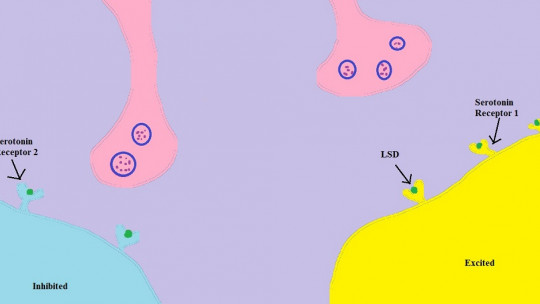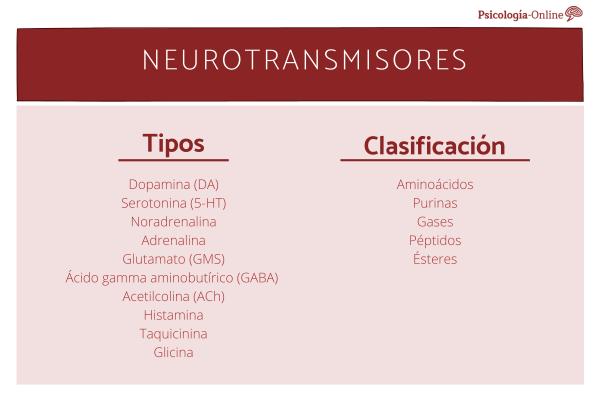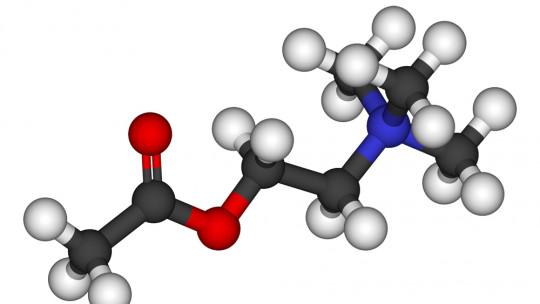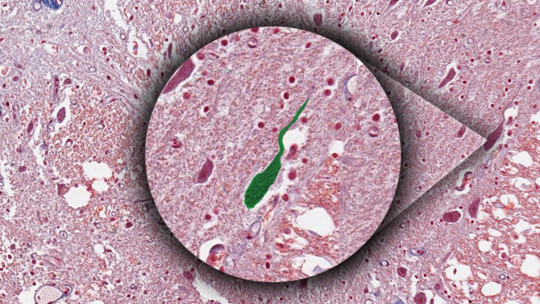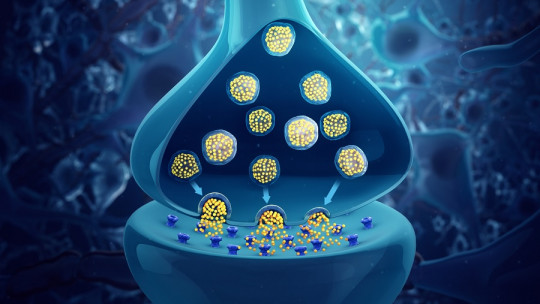It is known by many that the functioning of the human brain is based on the transmission of bioelectric signals.
This transmission implies the presence of a series of elements that transmit information from one neuron to another, these elements being neurotransmitters. There is a large amount of these substances, of very different types, causing different reactions depending on their composition and place of reception. Among these substances, in this article I am going to talk about norepinephrine
Defining norepinephrine
The substance known as norepinephrine is a neurotransmitter and hormone that acts at multiple points in the human body It is a catecholamine, a group of substances made up of noradrenaline, dopamine and adrenaline which come from tyrosine and which together with serotonin, acetylcholine, glutamate, glycine, opioids, anandamide and GABA are part of the main brain neurotransmitters.
At the brain level, this substance has an excitatory effect, although some of its receptors have an inhibitory function It participates both in the transmission of messages between areas of the brain and with the outside world, having a great participation in the sympathetic nervous system.
Likewise, noradrenaline not only acts as a neurotransmitter, but also has functions in the endocrine system, being produced at both the brain and adrenal levels.
Norepinephrine synthesis
As we have mentioned, norepinephrine is generated from the breakdown of tyrosine This degradation of this substance goes through tyrosine, dopa, dopamine, norepinephrine and adrenaline, thus being a derivative of dopamine.
The synthesis of norepinephrine occurs especially in the brain nucleus known as the locus coeruleus or blue nucleus. From this and other nearby brain regions, brain connections are projected with brain locations as relevant as the cerebral cortex, the limbic system, the thalamus and the hypothalamus.
Out of the brain, Norepinephrine is also produced by the endocrine system, being generated by the adrenal glands
Your receivers
Norepinephrine acts, in neurons, on various types of receptors called adrenergic receptors. These are mainly metabotropic receptors, that is, norepinephrine binds to receptors that, upon binding with the neurotransmitter, activate the G protein and cause other substances to act as second messengers.
Its basic receptors are the Alpha 1, Alpha 2, Beta 1, Beta 2 and Beta 3 receptors. The Alpha 2 receptors are inhibitory, but the rest of them have an excitatory effect when they act on the nervous system.
Norepinephrine degradation
As with serotonin, catecholamines such as norepinephrine are degraded by the enzyme monoamine oxidase also known as MAO, as well as catechol-O-methyltransferase or COMPT. These enzymes are responsible for controlling the presence of excess neurotransmitters, eliminating them
Main functions of this neurotransmitter
Norepinephrine is a neurotransmitter that acts in practically all regions of the brain, in addition to acting as a hormone within the endocrine system (something common in this class of substances).
In this way, its functions are multiple and varied. Let’s see below some of the main
1. Management of attentional focus
norepinephrine has a special implication in the maintenance of attention , causing an excitatory activation in the cerebral cortex that facilitates monitoring of the environment around us. Thus, the brain is able to select relevant information and separate it from irrelevant information to improve its performance when carrying out goal-oriented tasks. This excitement is carried out through the action of norepinephrine in the amygdala, among other areas.
2. Maintenance of wakefulness and consciousness
Linked to the previous point, Another element in which norepinephrine participates is in maintaining the state of wakefulness and the level of consciousness, due to its mainly excitatory action in the cerebral cortex. Thus, a decrease in the levels of this neurotransmitter can cause drowsiness and difficulties in responding to specific stimuli.
Thus, this neurotransmitter intervenes in the way in which we experience our own consciousness and subjectivity , but it is also noticeable in objective aspects, such as the way in which we manage our attentional focus and, consequently, how we perform when carrying out tasks. Both processes are linked, since there can be no management of attention if there is no awareness.
3. Influence on the cardiovascular system
The participation of norepinephrine is not limited to the transmission of brain messages, but also has an effect on the heart muscles Specifically, it acts by raising the heart rate and vascular tone, producing an increase in blood pressure. A decrease in the level of norepinephrine can cause hypotension, bradycardia and hypothermia.
This is one of the ways in which noradrenaline exerts a function on our body through the autonomic nervous system, responsible for carrying out automatic activities linked to survival in real time.
4. Fight/flight response.
Another of its functions is carried out mainly in the nucleus that synthesizes it, The locus coeruleus, norepinephrine, is primarily responsible for maintaining the fight and flight response In this sense, it produces an increase in blood flow to the muscular system, allowing performance and favoring motor responses that in many situations can get us out of dangerous situations.
5. Motivation
Norepinephrine has a consistent effect on motivational and energetic state , actively participating along with dopamine in the regulation of learning, memory and the sensation of reward. In this way, this neurotransmitter helps our actions have a vector, a directionality marked by short, medium and long-term objectives.
6. Mood regulation
Low levels of norepinephrine have been consistently linked to depressive states , in fact one of the hypotheses considered is that depression is produced by a deficit in the synthesis and presence of this substance in the brain synapses. This agrees with the effectiveness and with the fact that sleep deprivation (which, as we have seen, is linked to the level of norepinephrine) carried out in a controlled manner can in some cases be effective in reducing depressive symptoms.
When treating depression, the role of norepinephrine has also been taken into account. A clear example of this is cases of major depression, in which we can find drugs such as Dual Serotonin and Norepinephrine Reuptake Inhibitors with very high efficacy, similar to that of SSRIs. These psychotropic drugs act by preventing the norepinephrine and serotonin available in the synapses from being reincorporated into the neuron, prolonging their presence and effect in the synapse.
7. Stress, aggression and sexual behavior
Norepinephrine has also been shown in various studies to be linked to these three elements considered a hormone that actively participates in the state known as stress due to its action on the sympathetic nervous system.
In the case of sexual behavior, this hormone is involved in the sensation of pleasure during relationships, but it also plays a relevant role at the time of the birth of a new creature, accelerating contractions and participating in the expulsion reflex of the newborn. .


